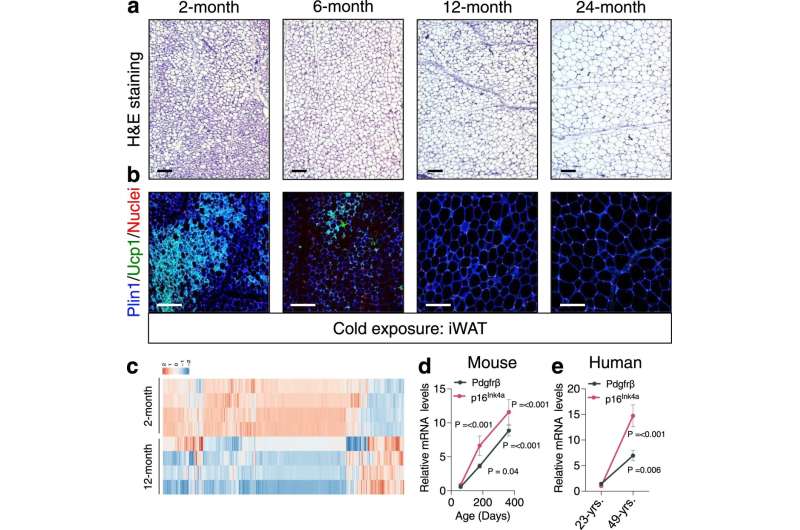This article has been reviewed according to Science X's editorial process and policies. Editors have highlighted the following attributes while ensuring the content's credibility:
fact-checked
peer-reviewed publication
trusted source
proofread
'Beige fat' could hold key to age-related metabolism change

New research suggests a strategy to ward off age-related weight gain, which could prevent obesity and associated health disorders like type 2 diabetes, heart disease and chronic inflammation.
By stimulating the production of a certain type of fat cells, the effects of a slowing metabolism could be reversed, according to a new study by researchers in Cornell's Division of Nutritional Sciences, which is housed in the College of Human Ecology and the College of Agriculture and Life Sciences.
Mammals, including humans, have two main types of fat: white adipose tissue (WAT), which stores energy from excess calorie intake, and brown adipose tissue (BAT), which burns calories to produce heat to maintain body temperature.
The study, published in Nature Communications, shows therapeutic promise in a third type of fat, a subtype of WAT: beige fat. Beige fat has the same cellular precursors as white fat and the same thermogenic properties as brown fat, which means it helps to reduce blood sugar and the fatty acids that cause hardening of the arteries and heart disease.
When a person experiences sustained exposure to cold temperatures, stem cells known as adipose progenitor cells form thermogenic beige fat cells within white fat. As people age, the response to that stimulus weakens, tipping the balance toward white fat production.
"There are seasonal changes in beige fat in young humans," said Dan Berry, assistant professor in the Division of Nutritional Sciences, "but an older person would have to stand outside in the snow in their underwear to get those same effects."
In earlier work, Berry observed that the aging process impairs the formation of beige fat cells in response to cold temperatures. Identify the biochemistry behind the slowdown, he said, and the same process could be reversed to achieve therapeutic outcomes.
"This is the ultimate goal," said Abigail Benvie, lead author of the new study and a doctoral student researcher in Berry's lab. "Without having to subject people to cold exposure for prolonged periods of time, are there metabolic pathways we can stimulate that could produce the same effect?"
In the paper, they reveal the role of a specific signaling pathway that suppresses beige fat formation in older mice by antagonizing the immune system. By suppressing that pathway in aging mice, the scientists were able to prompt beige fat production in animals that otherwise formed only in WAT.
More information: Abigail M. Benvie et al, Age-dependent Pdgfrβ signaling drives adipocyte progenitor dysfunction to alter the beige adipogenic niche in male mice, Nature Communications (2023). DOI: 10.1038/s41467-023-37386-z


















